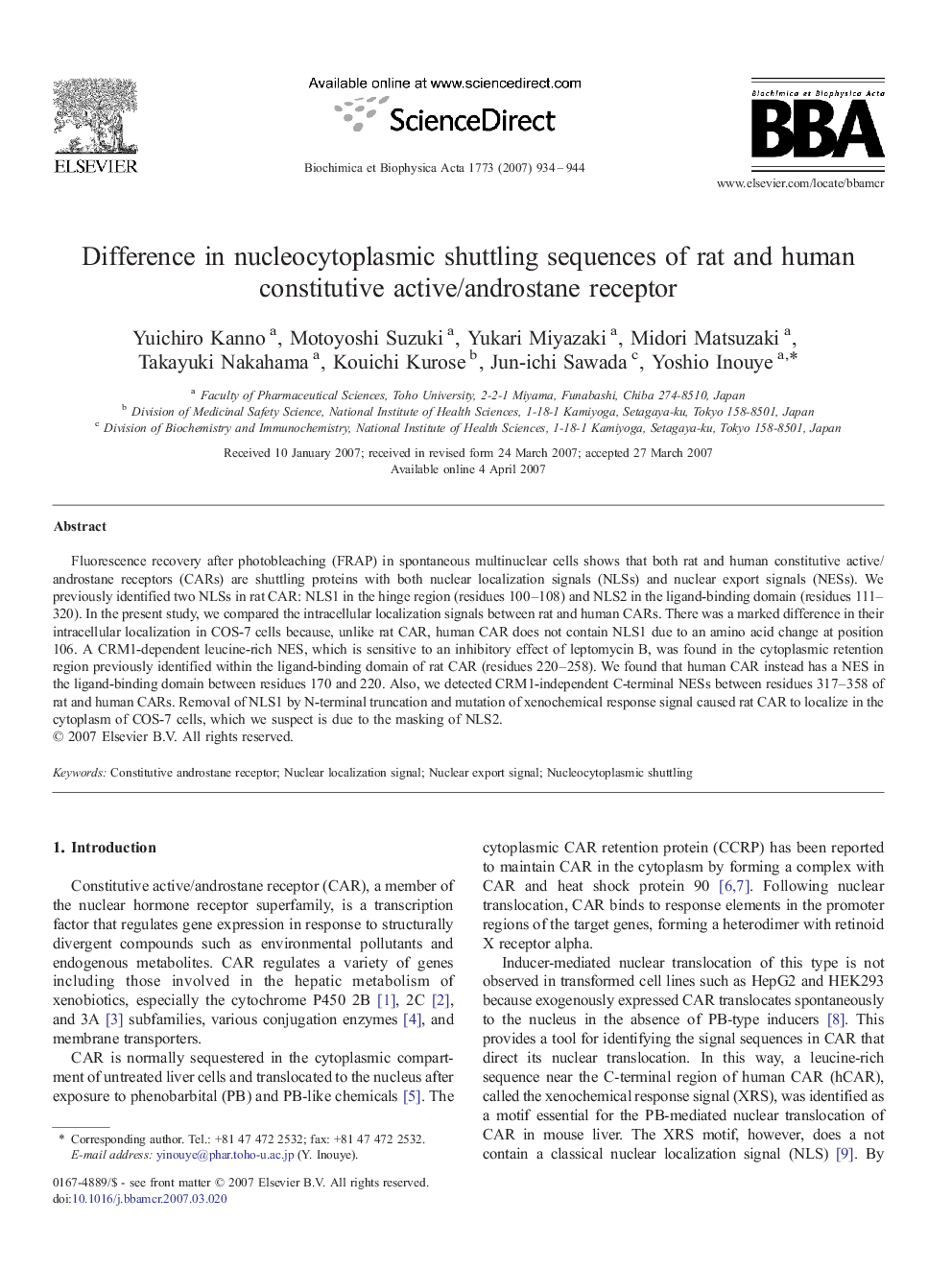| Article ID | Journal | Published Year | Pages | File Type |
|---|---|---|---|---|
| 10803060 | Biochimica et Biophysica Acta (BBA) - Molecular Cell Research | 2007 | 11 Pages |
Abstract
Fluorescence recovery after photobleaching (FRAP) in spontaneous multinuclear cells shows that both rat and human constitutive active/androstane receptors (CARs) are shuttling proteins with both nuclear localization signals (NLSs) and nuclear export signals (NESs). We previously identified two NLSs in rat CAR: NLS1 in the hinge region (residues 100-108) and NLS2 in the ligand-binding domain (residues 111-320). In the present study, we compared the intracellular localization signals between rat and human CARs. There was a marked difference in their intracellular localization in COS-7 cells because, unlike rat CAR, human CAR does not contain NLS1 due to an amino acid change at position 106. A CRM1-dependent leucine-rich NES, which is sensitive to an inhibitory effect of leptomycin B, was found in the cytoplasmic retention region previously identified within the ligand-binding domain of rat CAR (residues 220-258). We found that human CAR instead has a NES in the ligand-binding domain between residues 170 and 220. Also, we detected CRM1-independent C-terminal NESs between residues 317-358 of rat and human CARs. Removal of NLS1 by N-terminal truncation and mutation of xenochemical response signal caused rat CAR to localize in the cytoplasm of COS-7 cells, which we suspect is due to the masking of NLS2.
Keywords
Related Topics
Life Sciences
Biochemistry, Genetics and Molecular Biology
Biochemistry
Authors
Yuichiro Kanno, Motoyoshi Suzuki, Yukari Miyazaki, Midori Matsuzaki, Takayuki Nakahama, Kouichi Kurose, Jun-ichi Sawada, Yoshio Inouye,
